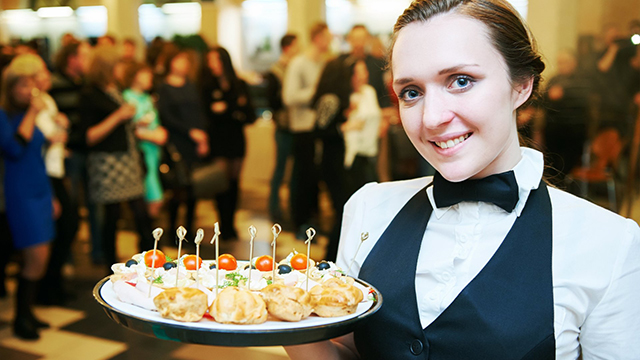Chu the Phat, a vibrant Asian restaurants Southbank and bar set in Brisbane’s up-and-coming Fish Lane dining precinct. Authentic Chinese food is rarely like the North Americanized versions found in Chinese restaurants throughout the West. More than one traveler has hit the streets in Beijing only to be disappointed that General Tso’s chicken is hard to find.
And as you’ve probably already guessed: fortune cookies aren’t a “thing” in China.
China is one huge, diverse place with millennia of culinary history and influences. China didn’t really open up enough until the 1960s and 1970s to share authentic Chinese food with the rest of the world.
Many of the familiar Chinese dishes that originated in California were adaptations by immigrants from the southern province of Guangdong. These dishes represent only a tiny portion of the spectrum that is Chinese cuisine. The “Chinese food” first shared with the world was largely adapted and altered, and pretty well all of it came from one region.
Everyone is familiar with those ubiquitous classics found on every menu in every neighborhood Chinese restaurant in North America. Experienced fans don’t even need to look at a menu. They already know that sweet and sour chicken, Mongolian beef, fried rice, and other familiar favorites are on offer.
What Is Authentic Chinese Food?
The cuisine that Westerners refer to as “Chinese food” mostly originated in San Francisco’s Chinatown during the 1950s. Jack Kerouac and many of the infamous “Beats” were fans. Chinese food was an inexpensive option for these cash-strapped artists, and the popularity of Eastern philosophy was growing. Visiting Chinatown was a cultural experience in itself.
This fusion food, which later spread around the country and the world, was obviously catered to current tastes and prepared with locally available ingredients. Even the vegetables are often different. The Western versions of broccoli, carrots, and onions rarely turn up in authentic Chinese food.
Authentic Chinese food dishes that were adopted by Western restaurants have some fundamental differences. For chicken, Westerners often prefer white, boneless breast meat. Chinese dishes often utilize the dark meat, connective tissue, organs, and small bones for nutritional value.
American-Chinese food tends to be less spicy than the authentic versions. In the United States, additional soy sauce and sugar are added to dishes that don’t normally call for much of a sweet or salty taste.
Soups and sauces are often made from powder packs sold by big Asian food conglomerates, hence the reason that many Chinese dishes and soups taste consistent in restaurants across the United States.
Where to Find Some Authentic Chinese Food?
If you travel a street or two away from tourist areas in China, finding English on menus in understandably rare.
Don’t buy into the old traveler myth that memorizing or writing down the symbol for chicken is enough. There’s a high likelihood the symbols that follow are for the feet, neck, or internal organs — the pristine-white breast meat preferred in the West is not always the default!
Hostels and hotels in Beijing that cater to travelers may indeed put some of the favorite dishes on the menu, if nothing else, to help with your just-arrived-in-china culture shock. Many familiar offerings — egg rolls, for one — truly are Chinese in origin, but they differ in taste and texture from the versions served in North America.
If Beijing isn’t an option, head directly to the nearest Chinatown, International District, or Asian community and just ask. Many Chinese restaurants have non-English menus with completely different offerings; they are often kept behind the counter for fear some dishes may be regarded as “offensive” or confusing for non-Chinese customers.
China is a big place; authentic cuisine varies widely throughout. Ask if something special can be prepared from the cook’s region. You may need to provide some input for the dish (e.g., choice of meat, rice, noodles, etc).
Note: Many “Chinese” restaurants in the United States are actually owned and staffed by entrepreneurs from Vietnam, Burma/Myanmar, and other places in Asia. Don’t be surprised if your attempt at a greeting in Chinese doesn’t always work out!
Authentic Chinese Cuisine That Is Popular in the West
Although a majority of the Chinese food favorites that we know in the West are not available in China, there are a few authentic dishes that were adopted and then Americanized:
- Egg Foo Young: The brown, Chinese omelet is a native dish from China.
- Kung Pao Chicken: Although kung pao chicken is an authentic Sichuan dish, the Western version is usually less spicy than the fiery original.
- Orange Chicken and Cashew Chicken: Again, don’t expect perfect chunks of white chicken breast in the authentic versions. Also, the American versions are much thicker and sweeter.
- Moo Shu Pork: Although this pork dish is available in China, it can be hard to find.
- Lo Mein: Typically one of the cheapest dishes on offer, lo mein noodles can be eaten throughout China and are part of many stir-fried dishes. Lo mein simply means “stirred noodles” — they are typically made from wheat flour.
- Fried Rice: Many varieties of fried rice are eaten throughout Asia, most often as a way to make safe rice left over from the day before. Even President Obama ate nasi goreng — Indonesia’s simple fried-rice dish — on his 2010 visit to the country.
- Buddha’s Delight: This healthy vegetarian dish got its name because many Buddhists follow vegetarian diets. It’s traditionally enjoyed on the first day of a lunar new year for health and to give animals a break. Buddha’s delight is often pricey because it can have up to 20 different types of ingredients, including tofu! The dish won’t delight vegans, however: it sometimes contains eggs or fish sauce.
- Wonton Soup: That ubiquitous salty broth is easy to find in China, although the soup may just contain noodles and balls of meat rather than pork-stuffed wontons. Wonton soup would typically be enjoyed as a meal in itself rather than as an accompaniment.
General Tso’s Chicken
Perhaps the most well-known of all Chinese food offerings, no one is completely sure who came up with General Tso’s Chicken. The leading theory suggests that a Chinese immigrant first created the famous dish while cooking for a restaurant in New York City. The debate is so hot that a documentary film was produced about the origins of General Tso’s chicken.
Even if we’re unsure about who served the first round of General Tso’s chicken, it’s a good example of how so many familiar dishes came about. Chinese immigrants experimented with local ingredients and adapted techniques to suit the tastes of local customers — Westerners.
Ironically enough, General Tso’s Chicken has gone the other way around the world: it’s catching on in more restaurants in Taiwan and mainland China.
Do Chinese People Eat With Chopsticks?
Yes! Although a few tourist restaurants may provide utensils for lost Westerners, you’ll be expected to know how to handle a set of chopsticks in most places.
The chopsticks in China are most often wooden or plastic rather than the metallic ones that are more popular in Korea. Millions of trees are chopped down each year to produce disposable chopsticks, and poisonous chemicals are used in the production. Consider carrying your own pair of chopsticks while traveling. At home, decline those throwaway sticks when offered; get a good reusable set to keep.
If you think you’ll be dining at a banquet or in more formal settings, learn the basics of Chinese table manners, and just in case, how to survive a Chinese drinking session. There are a few cultural faux pas at the dinner table best avoided.
Are Fortune Cookies Authentic?
No! Fortune cookies actually originated in Kyoto, Japan, during the 19th century and were later made famous by Chinese restaurants in California. Fortune cookies won’t be offered as a dessert after an authentic meal in China. You’ll have to pick those lucky lottery numbers another way.
Those crunchy wonton strips included with your meal are also an Americanized creation.
Are Egg Rolls an Authentic Chinese Food?
Yes, however, the deep-fried egg rolls served in American-Chinese restaurants are thicker skinned than authentic Chinese spring rolls. While American-Chinese egg rolls are bulked up with cabbage and pork, Chinese spring rolls are often thinner and contain mushrooms, tofu, and local vegetables.
Is There MSG in Chinese Food?
Usually. Monosodium glutamate is actually a Japanese creation, and Japan is the largest per-capita consumer of MSG in the world, but the Chinese most often get blamed for the use of MSG in food.
The term “Chinese Restaurant Syndrome” was even coined to describe the general unwell feeling after eating at a Chinese buffet. MSG is the subject of many studies and much debate. But no matter if you have a glutamate sensitivity or not, overeating and mixing many different types of foods prepared in heavy oil at Chinese buffets is sure to make you feel unwell. It isn’t the MSG!
Avoiding MSG when eating authentic Chinese food can be difficult. Even restaurants that claim not to use MSG often use it anyway or prepare dishes with ingredients that already contain MSG. But don’t panic! A precursory scan of your pantry may surprise you: MSG turns up in many major Western-branded soups, sauces, salad dressings, lunch meats, processed foods, and snacks that you may already be eating regularly. Many major food brands sneak it into American food.
Because consumers have become more label savvy, food companies often hide MSG under other names such as autolyzed yeast extract, hydrolyzed protein, or soy protein isolate so that consumers don’t catch on.
Don’t expect to feel unwell all the time while traveling in China due to MSG in local food. MSG is a salt, so drinking extra water helps flush it from the body.
Eating Street Food in China
Eating street food from carts and markets is not only a cheap, delicious way to eat, it may be safer than eating in restaurants!
Unlike restaurants where no one knows what lurks in the kitchen, you can see the level of cleanliness around a street cart. Also, unlike in restaurants, you have direct interaction with the cook. They don’t want to make their customers sick!
Competition is fierce between street-food carts; cooks who regularly make customers sick don’t stay in business for long. You’ll often find the most delicious and authentic Chinese food from street carts.


